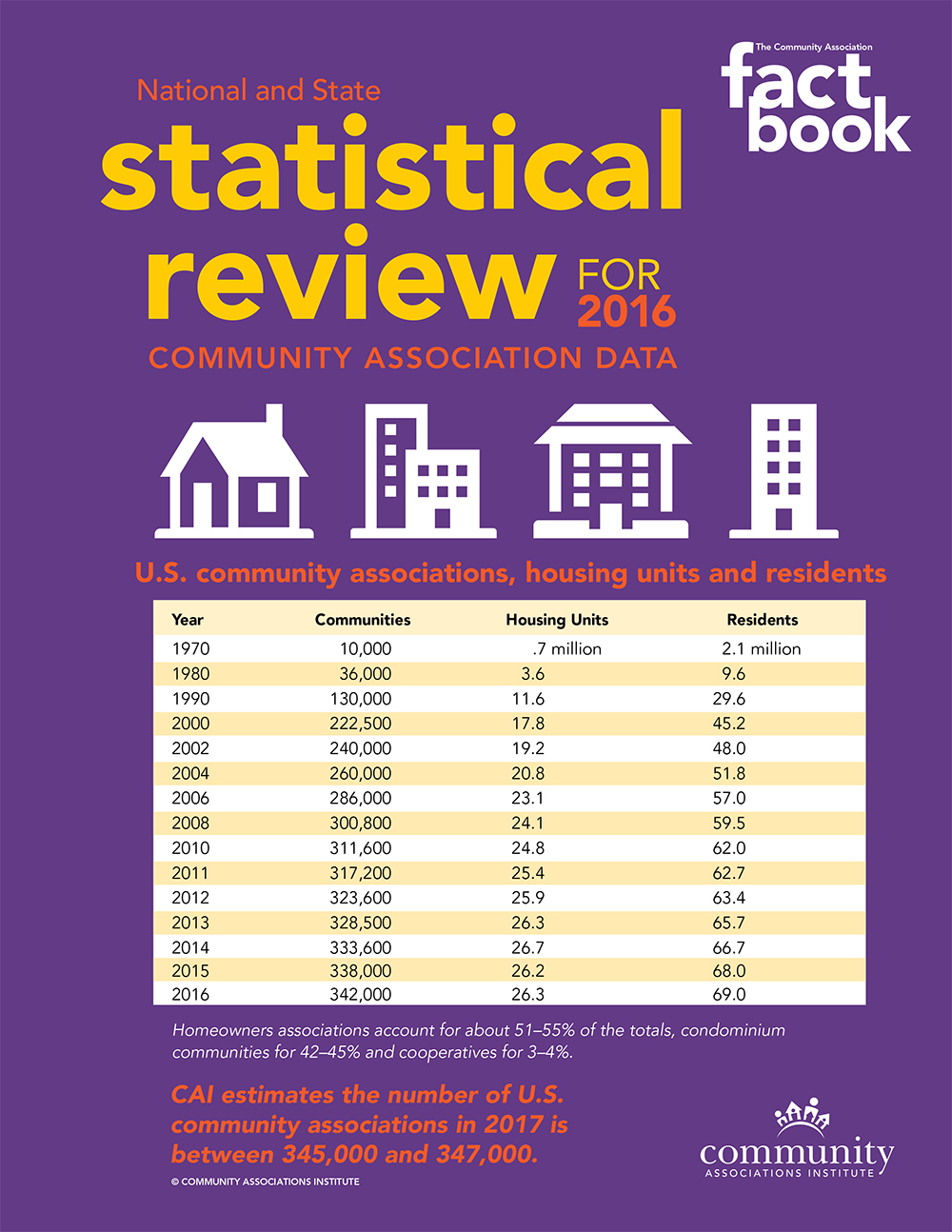Boston, MA Twenty-one percent of the U.S. population, approximately 69 million Americans, today reside in a community association, also known as planned communities (e.g. homeowners associations, condominium communities, and housing cooperatives), according to the 2016 National and State Statistical Review for Community Association Data, published by the Foundation for Community Association Research (FCAR). The research is produced by the Foundation in conjunction with Community Associations Institute (CAI), the leading national authority in community association education, governance, and management.
For more than 40 years, the Foundation has published the National and State Statistical Review which compiles community association data. In 1970, there were an estimated 2.1 million residents residing in 10,000 community associations and according to the 2016 report, the number of U.S. community associations in 2017 is between 345,000 and 347,000. Homeowners associations account for about 51-55% of the totals, condominiums for 42-45%, and cooperatives for 3-4%.
Florida continues to lead the nation’s community association housing model with 47,900 associations, and home to 9.6 million residents. California is the country’s second highest state for community associations with 45,400 communities followed by Texas (19,900), Illinois (18,600), North Carolina (13,900), and New York (13,800). In New England, Massachusetts ranks as the state with the most community associations (12,300) housing nearly 2.5 million people, followed by Connecticut with 4,850 associations, New Hampshire with between 2,000 to 3,000 associations and Maine, Rhode Island and Vermont with between 1,000 to 2,000 associations.
Additional results show the value of homes in community associations is more than $5.5 trillion, and $88 billion in assessments is collected annual from homeowners to fund essential maintenance.
The report further details top reasons for the growth of community associations:
• The Value of Collective Management. Americans largely have accepted the collective management structure of community association living where association boards are comprised of elected homeowners who voluntarily serve their communities.
• Privatizing Public Functions. With many local municipalities facing fiscal challenges, communities are often created with the stipulation that the developer will create an association that will assume many responsibilities that traditionally belonged to local and state government (e.g., road maintenance, snow and trash removal, and storm water management).
• Expanding Affordable Housing. There has been a persistent effort to increase the percentage of homeowners in America, and since the 1960s, condominiums have tended to serve as lower-cost entry housing, especially for first-time buyers.
• Minimizing Social Costs and Fostering Market Efficiencies. Community associations not only maintain home values, but also reduce the need for government oversight and expenditures by providing services, assigning payment responsibility to homeowners, and being responsive to local concerns.
To view the full report, visit foundation.caionline.org.
The FCAR provides authoritative research and analysis on community association trends, issues and operations. Its mission is to inspire successful and sustainable communities. Founded in 1975, the foundation’s work supports homeowner volunteer leaders and industry professionals who share a stake in the success of common-interest communities.
Since 1973, Community Associations Institute (CAI) has been the leading provider of resources and information for homeowners, volunteer board leaders, professional managers, and business professionals. The CAI New England chapter located in Wellesley, Mass. is one of the largest of the 63 affiliated chapters around the country.
 (1).png)







